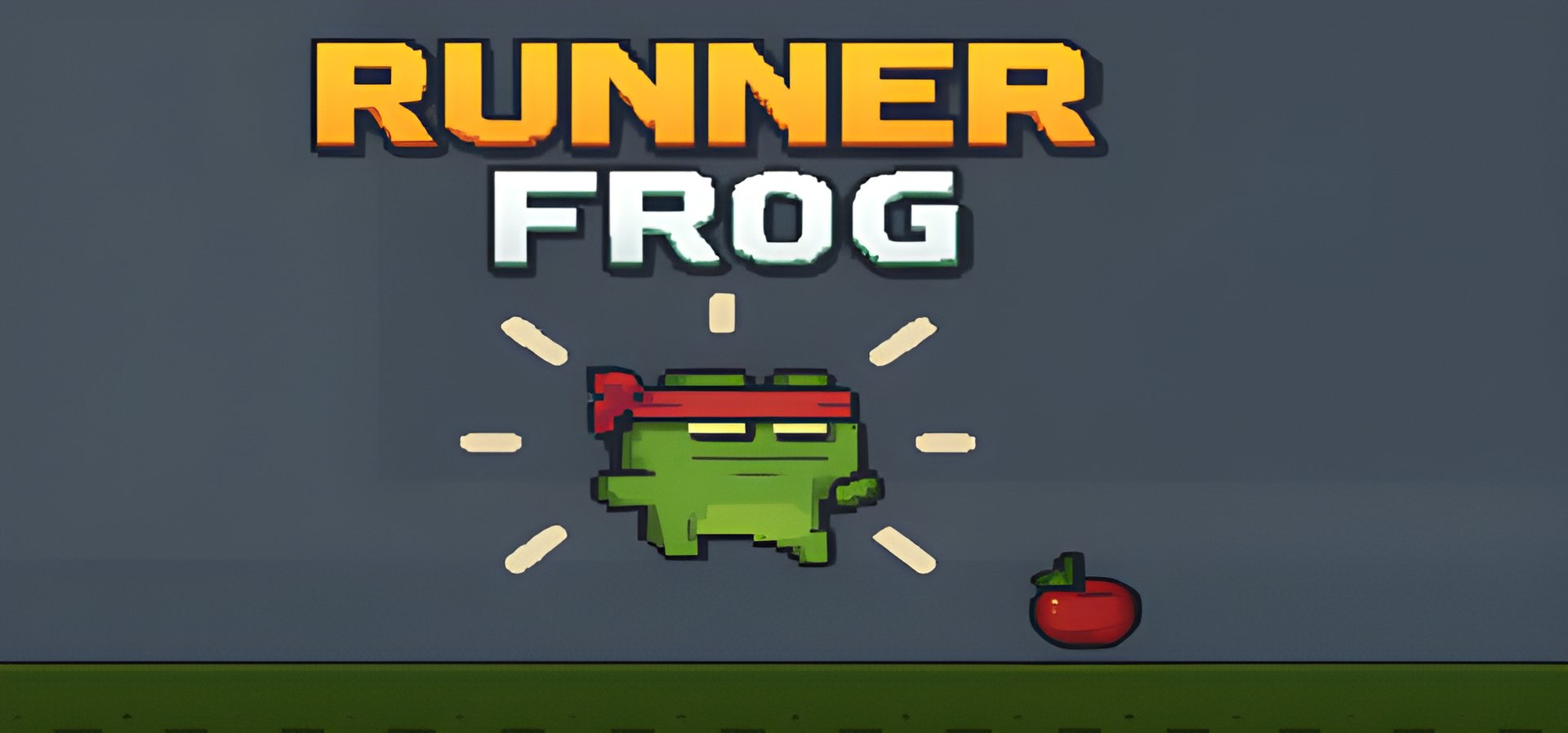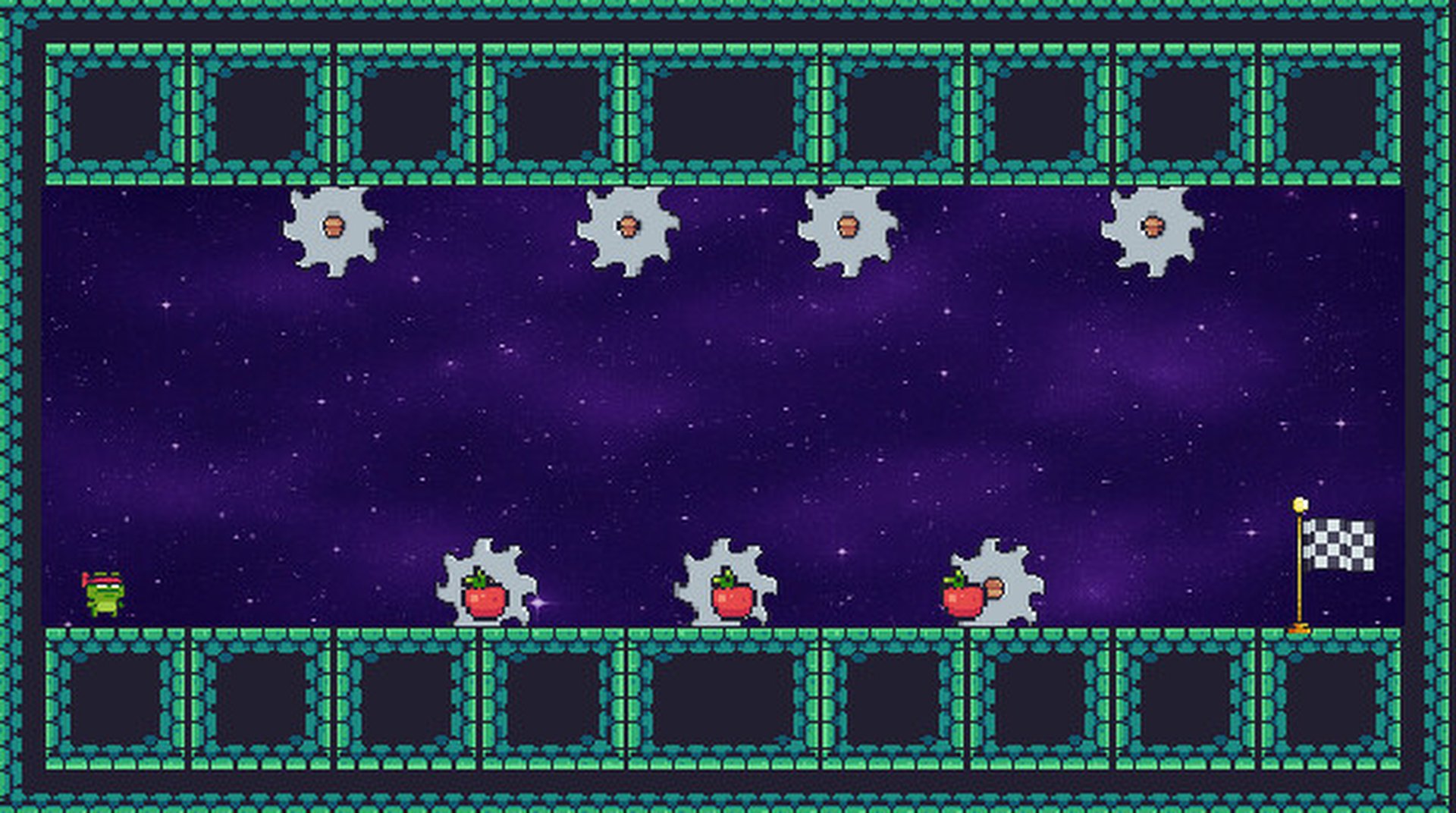The indie gaming scene is about to get a whole lot hoppier with the upcoming release of Runner Frog. This fast-paced 2D platformer promises a challenging, speedrun-oriented experience that will test the reflexes and patience of even the most seasoned gamers. With its retro pixel art style and a focus on tight controls, Runner Frog aims to capture the essence of classic platformers while adding a modern, speedrun twist. Will Runner Frog become the next indie darling? Let’s dive into what we know so far and explore the potential of this amphibian adventure.

What is Runner Frog All About?
Runner Frog is not your average stroll through the lily pads. Developed by Marlon D'avila, this game puts you in control of a determined frog on a mission to conquer 50 handcrafted levels filled with traps, platforms, and, of course, apples. The core gameplay revolves around completing each stage as quickly as possible, while minimizing deaths and maximizing apple collection. This scoring system adds a layer of depth, encouraging players to master each level and optimize their runs.
The game is designed with speedrunning in mind, featuring precise controls and challenging level designs that demand skillful navigation. Every death is a learning opportunity, pushing players to refine their strategies and improve their execution. The retro pixel art style adds to the nostalgic feel, reminiscent of classic platformers from the 8-bit and 16-bit eras. Runner Frog is aiming to deliver a blend of old-school charm and modern gameplay mechanics, appealing to both veteran platformer enthusiasts and newcomers alike.
Runner Frog is designed to be accessible yet challenging, making it suitable for a wide range of players. Whether you're a seasoned speedrunner looking for your next challenge or a casual gamer looking for a fun and engaging platformer, Runner Frog seems to have something to offer. The game's focus on replayability and skill-based progression ensures that players will always have a reason to come back and improve their performance. The developer's commitment to tight controls and handcrafted levels suggests a high level of polish and attention to detail, further adding to the game's appeal.
The game will be a single player experience where the goal is simply to beat the levels, collect apples and improve personal times. The game's scoring system, based on time, deaths, and apples collected, provides a clear and measurable way to track progress and compare performance. This focus on quantifiable achievements aligns well with the speedrunning ethos, where every millisecond counts. Ultimately, Runner Frog promises a blend of classic platforming action and modern speedrunning sensibilities.
Performance Expectations and Value Proposition
Given its retro pixel art style and 2D nature, Runner Frog should run smoothly on a wide range of PCs. The minimum system requirements listed on the Steam page indicate that the game can run on even relatively modest hardware, making it accessible to players with older or less powerful machines. This is a significant advantage, as it allows a broader audience to enjoy the game without needing to upgrade their systems. The developer lists an Intel Celeron processor and integrated Intel UHD Graphics or AMD Vega graphics as minimum specs, further emphasizing the game's low hardware requirements. This suggests that Runner Frog is well-optimized and designed to deliver a smooth and enjoyable experience, even on entry-level PCs.
Runner Frog's value proposition lies in its challenging gameplay, speedrun-focused design, and high replayability. With 50 handcrafted levels, each offering unique challenges and opportunities for optimization, the game provides a substantial amount of content for its price point. The built-in speedrun challenges for every stage add an extra layer of depth, encouraging players to master each level and compete for the fastest times. The apple collection system further incentivizes exploration and strategic decision-making, as players must balance speed with thoroughness to maximize their score.
Considering similar indie platformers on Steam, Runner Frog appears to offer a competitive value proposition. Games with comparable features and content often range in price from $5 to $15, depending on the scope and quality of the experience. If Runner Frog is priced within this range, it could be a compelling option for players looking for a challenging and rewarding platformer without breaking the bank.
While the game currently does not have an exact price published, the specs seem to make it a worthwhile investment. The combination of classic gameplay, modern speedrunning sensibilities, and low hardware requirements could make Runner Frog a sleeper hit on Steam.

Contextual Analysis and Longevity
As a coming soon title, Runner Frog has yet to establish a community or receive post-launch support. However, the game's design lends itself well to community engagement and potential future content updates. The speedrunning focus naturally encourages competition and sharing of strategies, creating a sense of community among players who are passionate about mastering the game.
The developer could further foster community engagement by implementing features such as leaderboards, ghost data (allowing players to race against recordings of other players' runs), and modding support. Leaderboards would provide a clear and transparent way to track progress and compare performance, while ghost data would offer valuable learning opportunities and inspire friendly competition. Modding support would allow players to create their own levels and challenges, extending the game's lifespan and adding a layer of user-generated content.
In terms of longevity, Runner Frog's replayability is a key factor. The speedrun-focused design and scoring system ensure that players will always have a reason to come back and improve their performance. The 50 handcrafted levels offer a substantial amount of content, and the increasing difficulty curve provides a sense of progression and accomplishment.
If the developer continues to support the game with updates and new content, Runner Frog could have a long and healthy lifespan on Steam. Potential future content updates could include new levels, characters, gameplay mechanics, and challenges. The developer could also consider adding multiplayer modes, such as cooperative speedruns or asynchronous time trials, to further enhance the social aspect of the game.
The success of Runner Frog will depend on a combination of factors, including its quality, price, marketing, and community engagement. However, the game's promising design and focus on speedrunning suggest that it has the potential to carve out a niche for itself in the crowded indie platformer market. Whether Runner Frog becomes a long-term success remains to be seen, but its initial impressions are certainly positive.
Final Verdict: Is Runner Frog Worth the Hype?
Runner Frog is shaping up to be a promising addition to the indie platformer landscape. Its blend of retro aesthetics, challenging gameplay, and speedrun-focused design is likely to appeal to a wide range of players. The game's low system requirements make it accessible to gamers with older or less powerful PCs, while its high replayability ensures that players will have a reason to come back for more. If you're a fan of classic platformers or a speedrunning enthusiast, Runner Frog is definitely worth keeping an eye on. While the game's long-term success will depend on post-launch support and community engagement, its initial impressions are certainly positive.
Whether Runner Frog can truly leap to success remains to be seen, but its potential is undeniable. The blend of classic and modern elements, combined with its focus on accessibility and replayability, makes it a game to watch. If you're looking for a challenging and rewarding platformer with a speedrunning twist, Runner Frog is worth adding to your Steam wishlist.
Pros & Cons
✅ Pros
- Tight and responsive controls designed for precision platforming
- 50 handcrafted levels, each with unique challenges
- Speedrun-focused gameplay with a scoring system based on time, deaths, and apples
- Retro pixel art style with colorful and nostalgic visuals
- Low minimum system requirements, making it accessible to a wide range of players
❌ Cons
- Currently lacks a community or post-launch support
- No multiplayer modes (single-player only)
- Longevity depends on continued developer support and potential content updates
- No modding support (at least initially)
- Potential for frustration due to high difficulty